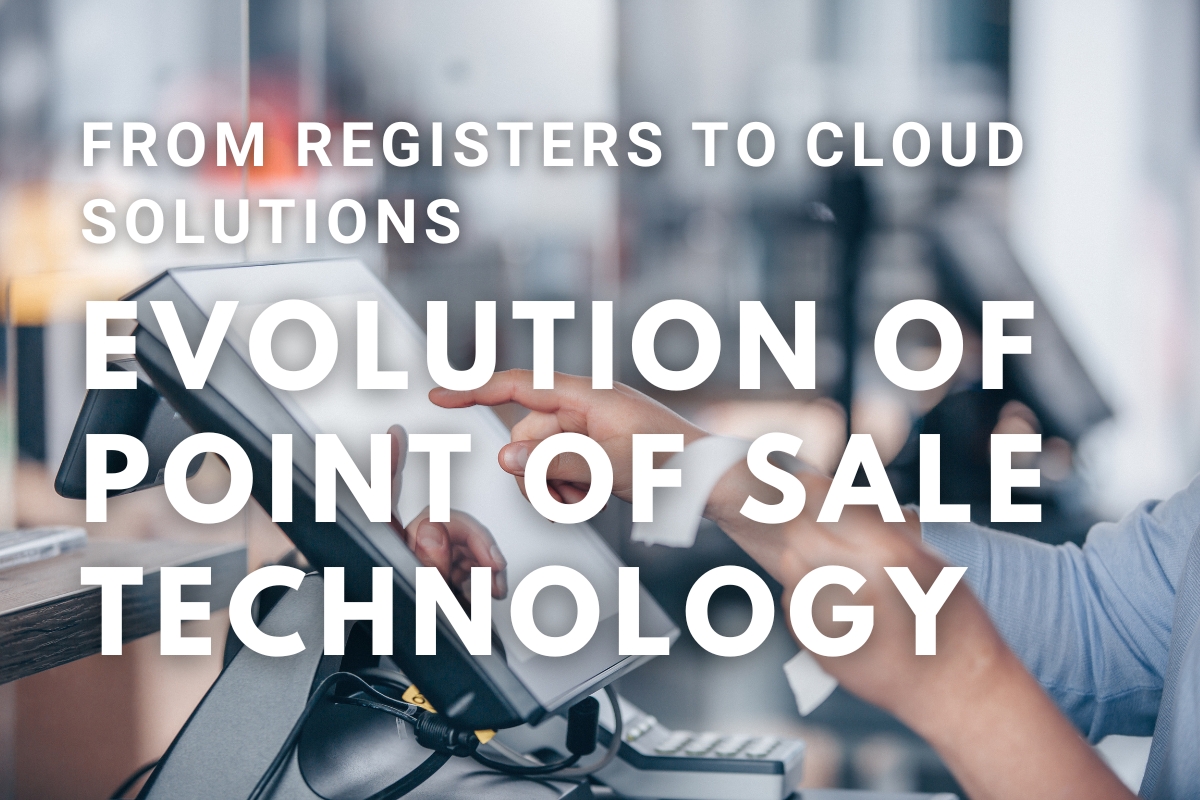Step into the past, into a time when running a shop, meant dealing with the mysteries of daily sales tracking. Large retailers faced a frustrating problem: the absence of a reliable Point of Sale (POS) system to monitor transactions. The result? An unsettling inability to calculate daily earnings accurately complicates proper management and decision-making.
Today, the scenario is vastly different. Thanks to technology, we now have sophisticated POS systems that effortlessly manage retail operations. But how did we get here?
Genesis
The POS system we know today has a rich history, sparked by the ingenuity of a saloon owner from Ohio in 1879. This visionary was on the brink of revolutionizing the world of business. What began as a spark of inspiration would reshape the course of commerce for generations to come.
A Time Before POS
Before this innovation, tracking transactions was an enigma. Driven by a quest for efficiency and transparency, an Ohioan planted the seed that would grow into the modern POS system. Imagine a bustling saloon, where patrons could finally keep a clear record of their purchases, and owners could systematically track every sale. This transformative concept spread like wildfire. Fast forward to today, and virtually every business employs some version of this groundbreaking invention.
Next time you observe a seamless transaction, remember that it was an enterprising saloon owner from Ohio who lit the spark of the retail revolution.
The Birth of the First Cash Register
The roots of the modern POS solution trace back to the 1880s, a time when the American Civil War had just concluded and this period marked a transformative era in American businesses. The need for additional staff to assist customers surged as businesses expanded. However, this growth posed a significant challenge – newly hired staff, often strangers, had the opportunity to pocket customer payments discreetly. The absence of an effective means to monitor sales gave rise to internal theft, especially in bars and shops.
Emergence of Change
Dayton, Ohio, became the center of change, thanks to James Ritty, a determined saloon owner. The Pony House, his bustling establishment, was plagued by a problem: untrustworthy bar staff absconding with hard-earned money. Frustration drove Ritty to seek a solution, which he discovered during a transformative steamship voyage to Europe.
Imagine Ritty aboard the steamship, captivated by a mechanism tallying the propeller’s revolutions. The idea struck him – why not adopt a similar mechanism to track payments at The Pony House? With newfound determination, Ritty returned to Ohio, armed with a vision.
Fuelled by his vision, Ritty embarked on crafting the world’s first mechanical cash register. This invention had the power to revolutionize businesses, curb internal theft, and infuse transparency into transactions. Through relentless experimentation, Ritty created a device that would alter the business landscape forever.
Patented in 1879 as “Ritty’s Incorruptible Cashier,” it featured a customer payment display and an internal section to calculate total earnings, albeit lacking a receipt printer or cash drawer. Ritty’s factory produced just one such device, acquired by John Henry Patterson, a coal shop owner in Coalton, Ohio.
The Legacy Continues
The next time you use a cash register or witness a seamless transaction, remember that a determined saloon owner’s frustration and fascination with a steamship’s mechanism laid the foundation for the innovation that evolved into today’s modern POS system.
James Ritty’s company eventually changed hands, leading to the introduction of a cash drawer and the refinement of the bell system. The company evolved into NCR Corporation in 1884, marking the rise of the modern point of sale as receipt printing and proactive sales strategies gained prominence.
Following Ritty’s revolutionary cash register, the evolution of Point-of-sale (POS) systems underwent a series of advancements that propelled retail operations forward. The shift from mechanical to electrical cash registers marked a significant stride in the evolution of POS solutions.
The Electrical Leap
In 1906, Charles F. Kettering of NCR introduced the world to the first electric motor-powered cash register. However, the true game-changer arrived with the advent of electronic calculators. These calculators paved the way for fully electronic cash registers during the 1950s and 1960s, marking the dawn of electronic cash registers in the realm of retail.
The IBM Revolution: Pioneering the Modern POS
The evolution of the Point of Sale (POS) system took a transformative leap with IBM’s introduction of the modern point of sale (POS) system in 1973.
IBM’s Technological Marvel
In 1973, IBM introduced the first point of sale (POS) system, capable of managing up to 128 tills via local area networks. This groundbreaking innovation resonated across industries. McDonald’s adopted the first microprocessor-based tills, replacing their electronic system. The 1980s witnessed further advancements, culminating in compact graphical data machines that streamlined retail operations without exorbitant costs.
IBM’s legacy persisted, highlighted by the launch of the first PC-based POS system in 1985. The following year, Gene Mosher pioneered point-of-sale software, featuring a colorful touchscreen interface that foreshadowed elements embraced by web browsers.
The Windows Era: A Paradigm Shift
Technology’s relentless evolution paved the way for Windows-based POS systems, signaling a new era for retail management.
With the advent of the 1990s and the internet boom, Windows-based POS systems gained prominence. Although computerized POS solutions were diverse in machines and operating systems, Windows emerged as the dominant platform, reshaping the retail market.
The Cloud Revolution: Transforming Retail
As technology soared, cloud technology emerged as a game-changer, ushering in a new era of accessibility and efficiency for retail operations.
The Emergence of Cloud POS
The turn of the century brought forth the cloud-based POS solution, transforming the retail industry. Traditional computerized systems requiring manual hardware and software installation became relics of the past. The concept of E-POS transitioned into Software as a Service (SaaS), with service providers owning and operating the software. Cloud-based POS systems, introduced in 2002 in the UK, found a home on robust touchscreen PCs. McDonald’s embraced this innovation, accepting credit card payments through a cloud POS solution in 2007.
Smartphones Amplify Cloud POS
Smartphones entered the scene, amplifying the impact of cloud POS systems and enhancing accessibility and convenience.
In 2007, the rise of smartphones paved the way for mobile point-of-sale platforms with card payment capabilities. This breakthrough facilitated compatibility between cloud POS systems and consumer-grade mobile devices, opening doors for micro-merchants.
The Present and Beyond: A New Horizon
From the inception of the first cash register to the mobile POS revolution, the evolution of the Point-of-sale (POS) system has been a journey of innovation. Today’s POS systems empower businesses with seamless retail management, marketing, pricing, inventory, and customer service functions. The future holds even more tremendous potential, where accessibility and automatic updates through cloud technology continue to shape the retail landscape.
Future of Retail Today
The evolution of Point-of-sale (POS) technology has been nothing short of transformative. As the retail world continues to evolve, so do the tools that power it. From the humble beginnings of the cash register to the cloud-based solutions of today, the journey has been one of innovation, determination, and progress. If you’re a retailer seeking streamlined and cost-effective operations, consider the cutting-edge cloud POS solutions available. Get in touch with us to explore how our state-of-the-art cloud POS solutions can revolutionize your retail experience. Together, let’s shape the future of commerce.


